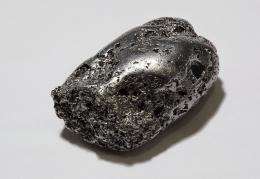October 17, 2012 weblog
Chemist develops process that allows iron to serve as platinum catalyst

(��������)—Paul Chirik, a chemistry professor at Princeton University has, according to a profile in the New York Times, developed a process that allows ordinary iron to be used as a substitute catalyst in certain reactions that up till now have required platinum.
Platinum is very expensive, roughly $22,000 a pound and is used as a catalyst to make many popular products such as the denim in jeans and beer. The reason it's expensive is because it is relatively rare and most of it is mined in just two countries, Russia and South Africa. For this reason, chemists have been looking at ways to use other materials as a catalyst to reduce the reliance on rare metals.
Catalysts are materials that are added to other chemicals to lower the activation level of a reaction. The activation level is the amount of energy held in chemicals needed to overcome a barrier known as the activation energy. Because of its special properties, platinum, along with other noble metals such as palladium and rhodium, has been found to be an excellent catalyst in many modern day manufacturing processes, but as more is needed, the price rises, causing the need for alternatives to be found.
Iron in comparison to platinum, is very cheap, going for about 50 cents a pound. But it's not a very good catalyst, at least not in its natural form. To make it a better catalyst, Dr. Chirik has found a way to modify its outer structure to cause other chemicals to react with it as if it were platinum. His process involves wrapping iron molecules with an organic molecule known as a ligand. Doing so alters the number of electrons that become available for forming bonds and allows for more rigid structure development.
This new research could have a major impact on manufacturing processes, allowing for the creation of a wide variety of products that rely on expensive rare metals, at much lower prices. There are still some obstacles in the way, however, such as figuring out how to prevent the modified iron from rusting.
More information:
© 2012 ��������




















